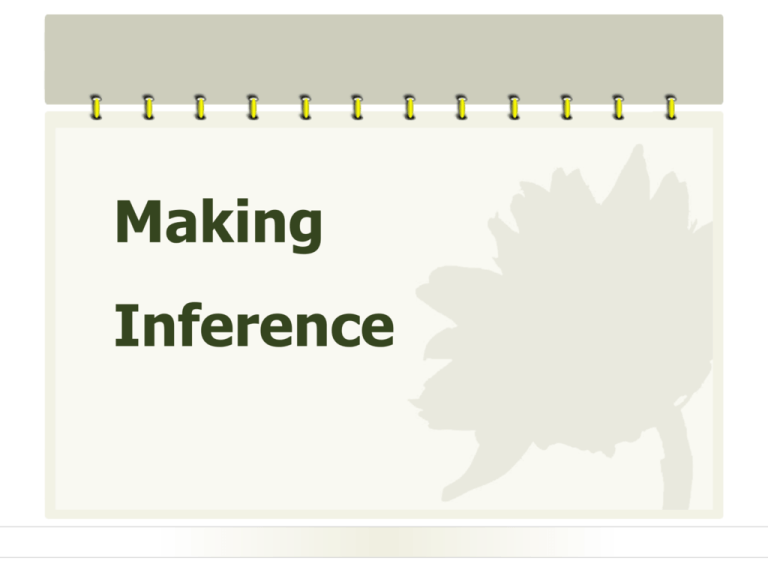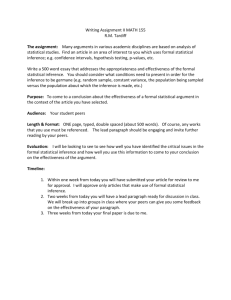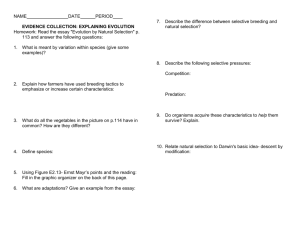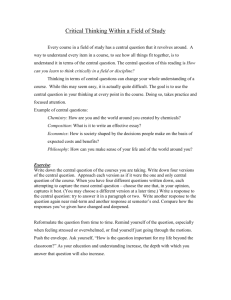How to Make Reasonable Inference
advertisement

Making Inference Definition • Making inference: to draw or guess information or ideas which are not specifically stated by the author in the reading material. It is a reasonable and logical guess based on what the author says. Examples • E.g. • The climbing team planned to begin the ascent on the 14 May if the weather was fine. They didn’t begin until June. Function • Making inference while reading could help readers understand the content more thoroughly and catch the author’s purpose and attitude more efficiently. Examples • 1. I saw by the clock of the city jail that it was past eleven, so I decided to go to the newspaper immediately. Outside the editor’s door I stopped to make sure my pages were in the right order; I smoothed them out carefully, stuck them back in my pocket, and knocked. I could hear my heart thumping as I walked in. Examples • a). The teller of this story has just left the city jail. b). He has been carrying his papers in his pocket. c). We know that the storyteller is a newspaper writer by profession. d). We might infer that the storyteller is going to show his paper to the editor. e). The meeting is important for the storyteller. Examples • 2. This organization may succeed marvelously at what it wants to do, but what it wants to do may not be that important. a). The organization is marvelous. b). The organization may succeed. c). Although the organization may reach its goals, the goals might not be important. d). What the organization wants is marvelous. e). The author questions the goals of the organization. How to Make Reasonable Inference • 1. Understand the literal meaning of the material. Only in this way can you go beyond the literal meaning and make reasonable inferences. How to Make Reasonable Inference • 2. Ask yourself the following questions: --- What is the author trying to suggest from the stated information? --- What do all the facts and ideas point toward or seem to add up to? --- For what purpose does the author include these facts and details? How to Make Reasonable Inference • 3. Verify your inference to check if it is accurate. You may look back at the stated information to be sure that there is sufficient evidence to support your inference. Some points in making inference • 1. Noticing the author’s choice of words, sentence structures, and the stating tone. • ---I believe that smoking cigarettes is harmful. ---It is believed that smoking cigarettes is harmful. ---Smoking cigarettes is harmful. • The young man quickly answered, “Yes, sir.” Some points in making inference • 2. Mind the accuracy of your inference Base your inference on the information given; do not take your own opinion as the author’s • The old man staggered along the side walk. He grabbed the picket fence to keep from falling. His torn grey overcoat flapped open in the winter wind. Classification of questions • 1. inferring some information from certain details or the understanding of a detail. • 2. inferring the author’s purpose in writing the passage. Classification of questions • 3. inferring the content preceding or following the given passage. • 4. inferring the author’s tone or attitude






